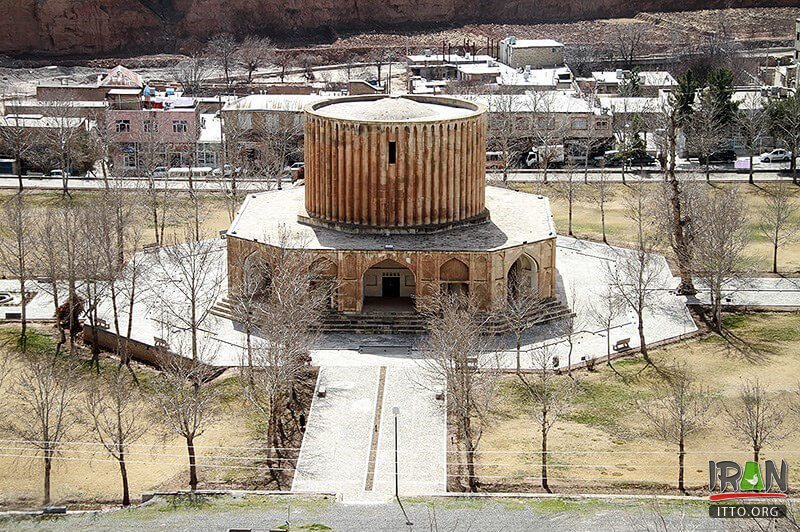Khorshid Palace or Qasr-e Khorshid (literally ‘the Sun Palace’), is an 18th-century iconic monument which is currently used as a museum of anthropology in Kalat County, Khorasan Razavi province, northeast Iran.
The 20-meter-high monument is also well-known as Kalat-e Naderi, named after the famed Afsharid ruler Nader Shah (r. 1736–1747). The structure embraces a scenic fluted-shaped circular exterior, a vast ground floor level, a cellar and a cylindrical tower which is supported by 66 columns.
With 12 rooms decorated with paintings and ornamental works such as plaster moldings, it was once a temporary home to king and his family. The surrounding garden contains 8 pools with connecting streams and fountains.
Narratives say the ‘palace’ is named after Khorshid who was one of Nader’s wives. However, it was never completed due to an ambiguous state of affairs that poured in following Nader Shah’s sudden death.
Some believe that foreign artisans were engaged in construction of the monument as its exterior panels bear pineapple and pear motifs, which is deemed to be unknown in the then Khorasan region.
Evidence suggests the building was used as a residential headquarters during the early Qajar era (I785 to 1925).
Nader Shah is widely considered as one of the most powerful rulers in history of the nation. He assumed power when a period of chaos overwhelmed Iran. Nader managed to reunite the Persian realm while repelled invaders. He is sometimes referred to as the Napoleon of Persia or the Second Alexander.



